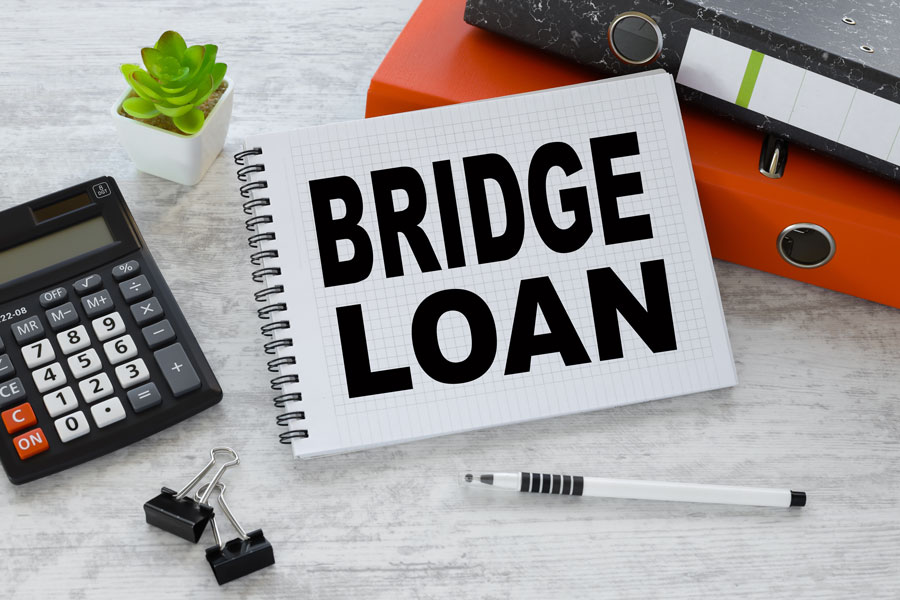Comprehensive Guide to Bridge Loans
A bridge loan is a short-term financing option used by homeowners or real estate investors to bridge the gap between the purchase of a new property and the sale of an existing one. These loans are typically used when there is a delay between the two transactions, allowing the borrower to access immediate funds to complete the purchase without waiting for the sale proceeds.

How Bridge Loans Work
Bridge loans are secured by the existing property or the new property being purchased. They are typically structured as interest-only loans with a short repayment period, usually ranging from six months to a year. The idea is that the borrower will repay the loan once the existing property is sold or when they secure long-term financing.
Key Features of Bridge Loans:
- Short-term financing: Typically 6-12 months.
- Higher interest rates: Due to the short-term nature and higher risk.
- Interest-only payments: Usually, borrowers only pay the interest until the loan is due.
- Flexible terms: Tailored to the specific situation of the borrower.
- Secured by property: The loan is backed by the value of the existing or new property.
Who Can Benefit from a Bridge Loan?
Bridge loans are most beneficial in specific scenarios:
- Homebuyers in Competitive Markets: In a hot real estate market, timing is crucial. A bridge loan allows you to purchase a new home quickly without waiting for your current home to sell, giving you a competitive edge.
- Real Estate Investors: Investors who need to act quickly to secure a property can use bridge loans to close deals while they arrange long-term financing or sell another property.
- Homeowners Looking to Upgrade: If you want to buy a larger or more expensive home, a bridge loan can provide the necessary funds to make the purchase before selling your current home.
- Property Developers: Developers can use bridge loans to cover construction costs while awaiting longer-term financing or the sale of developed properties.
Top Questions About Bridge Loans
- How much can I borrow with a bridge loan?
- The amount you can borrow typically depends on the equity in your current property or the value of the new property. Lenders usually offer up to 80% of the combined value of both properties.
- What are the interest rates for bridge loans?
- Interest rates for bridge loans are generally higher than traditional mortgages, often ranging from 8% to 12%. The rate can vary depending on the lender and your creditworthiness.
- What are the risks associated with bridge loans?
- The main risks include higher interest rates, the possibility of not selling your existing property within the loan term, and the potential for foreclosure if you cannot repay the loan on time.
- How do I qualify for a bridge loan?
- Qualification typically depends on the equity in your existing property, your credit score, and your overall financial situation. Lenders will assess your ability to repay the loan, often requiring proof of income and a solid credit history.
- Can I use a bridge loan for any type of property?
- Bridge loans can be used for residential, commercial, and investment properties. The specific terms may vary depending on the property type.
- What happens if I can’t sell my home in time to repay the bridge loan?
- If you can’t sell your home in time, you may need to explore other financing options to pay off the bridge loan, such as refinancing into a longer-term mortgage or selling other assets.
- Are there alternatives to bridge loans?
- Yes, alternatives include home equity loans, personal loans, or negotiating a longer closing period on the new property purchase. Each option has its pros and cons depending on your situation.
How to Get a Bridge Loan
- Assess Your Financial Situation: Ensure you have enough equity in your current home and a plan to repay the loan if your home doesn’t sell as quickly as expected.
- Shop Around for Lenders: Not all lenders offer bridge loans, so it’s essential to find one that does and compares terms, interest rates, and fees.
- Prepare the Necessary Documentation: You’ll need to provide proof of income, your credit history, and details about the properties involved.
- Get a Property Valuation: A professional appraisal of your current home and the new property is often required to determine the loan amount.
- Submit Your Application: Once you’ve chosen a lender, complete the application process, which may include an underwriting period.
- Close the Loan: After approval, you’ll go through the closing process, similar to a traditional mortgage, where you’ll sign the loan documents and the funds will be disbursed.
Bridge loans can be a valuable tool for homeowners and real estate investors who need quick access to funds during a property transaction. While they come with higher costs and risks, they offer flexibility and speed that can be crucial in a competitive market. By understanding how bridge loans work, who they benefit, and how to qualify, you can make an informed decision on whether this type of financing is right for your situation.
Contact me now about a bridge loan by using the form below or call (720) 336-7250

